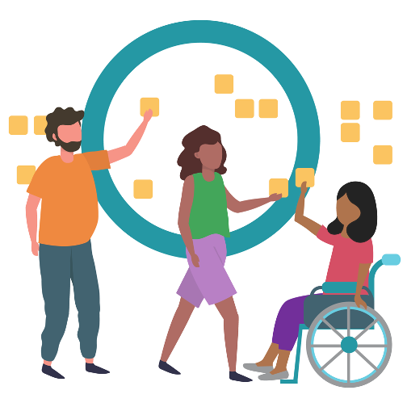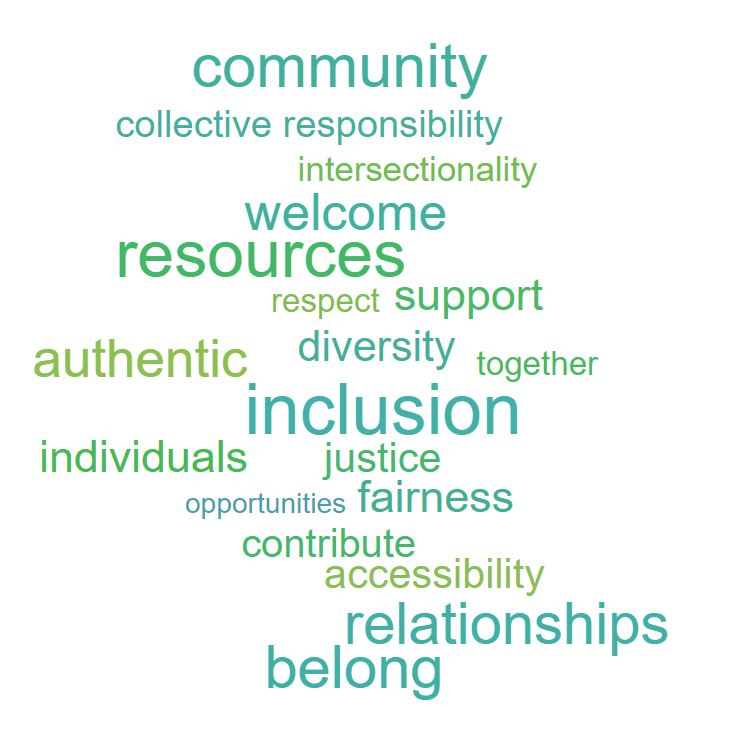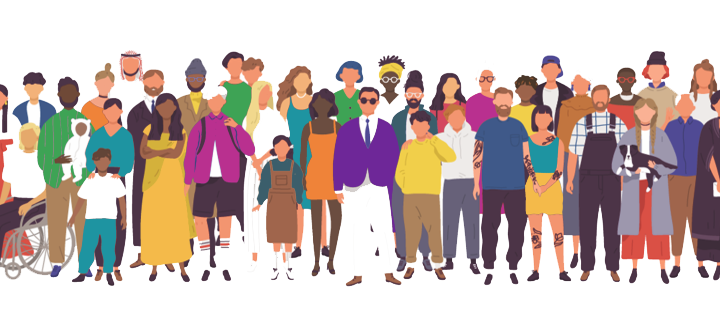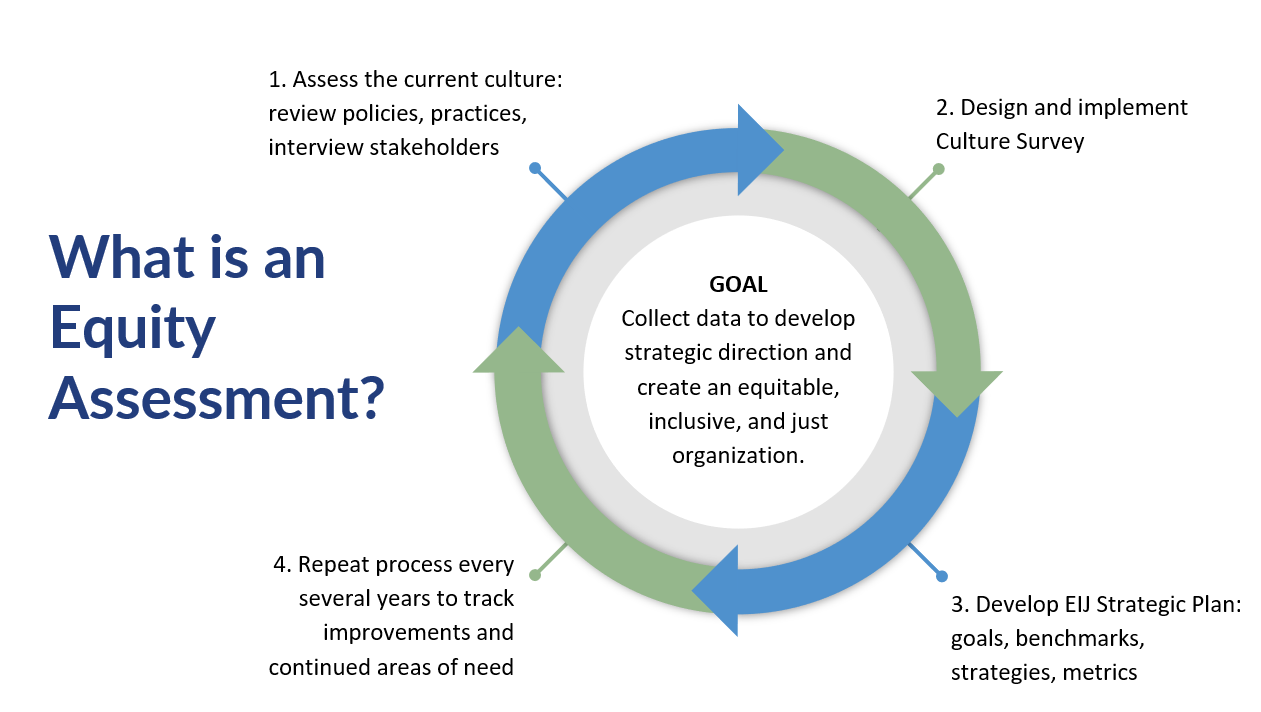Updated on 4/23/2024
AMS needs your support - the support of all members, volunteers, staff - to create a welcoming and inclusive culture.
The AMS Equity Assessment Report Is Here!
The AMS Equity Assessment is Complete!
You can read more about the Culture Survey and Equity Assessment below, download the article featured in the August issue of the digital BAMS, or watch the webinar Creating Cultural Change through Data: The American Meteorological Society Equity Assessment.
Why Did AMS Conduct an Equity Assessment?
We initiated an Equity Assessment (EA) to allow the organization to fully integrate equity, inclusion, and justice (EIJ) into our programmatic activities and policies, foster a sense of belonging for our membership, staff, and volunteers, and guide the activities of the Society over the short- and long-term.
AMS Equity Assessment Vision
The Equity Assessment gathered information about the experiences of members, volunteers, and staff with AMS around equity, inclusion, and justice. It strengthens awareness of challenges and opportunities for the Society to become the diverse, inclusive, and respectful community that is essential for our science. The process builds on our history of equity, inclusion, and justice (EIJ) work and develops the foundation for strategic, coordinated action.
The Equity Assessment aligns with our Core Value that a diverse, inclusive, and respectful community is essential for our science and our Strategic Goal to cultivate a talented, diverse, and enthusiastic workforce in the professions served by the AMS.
What is an Equity Assessment?
An Equity Assessment is a structured set of activities that illuminates an organization’s current culture, reveals the experiences of its members and staff, and provides strategic direction and transparency. The goal is to create an equitable, inclusive, and just organization. For 50 years, AMS has been working to create a more inclusive society and has several ongoing initiatives that support this work.
The Equity Assessment is our next step in this work. The Equity Assessment, initiated at the 103rd Annual Meeting, is not meant to isolate our efforts to a single project. Rather, it is meant as a catalyst for sustained engagement and will allow us to more fully integrate EIJ into our programmatic activities and policies, foster a sense of belonging for our membership, volunteers, and staff, and guide the activities of the Society over the short and long term.
 Core Questions
Core Questions
The AMS Culture Survey sought to answer three significant questions.
- What experiences are people having as members of the AMS?
- Who is having those experiences?
- How are those experiences impacting their perception and participation with the AMS?
Areas of Focus
We sought to answer these significant questions by focusing on these major areas.
- Belonging: What does it mean to AMS membership to belong, and are they experiencing belonging? How does AMS culture support belonging?
- Bias: When are there gaps between AMS’s ideals around EIJ and members’ experiences? Who experiences these gaps?
- Equitable Access: Who has access to participate and advance in AMS? How does this impact their experience of the organization, their career path, and their retention in the society?
Results of the Equity Assessment
By the Numbers
2,421 community members responded to the AMS Culture Survey, including:
- 65% Members
- 9% Student Members
- 21% Non-Members
- 4% Staff
- 2% Unknown
87% of Respondents Agreed that EIJ Efforts Are Important to the AMS Community
48% of Respondents Said AMS Could Better Accommodate Their Needs
7.8% of Respondents Reported Encountering Bias at AMS Events
What We Learned
The AMS Community Values Equity, Inclusion, and Justice!
When considering changes related to equity, inclusion, and justice (EIJ) at AMS, individuals might understandably wonder: “What do others think? Should we take bold steps or proceed cautiously? Will these changes unite or divide our community?”
The Equity Assessment gauged the AMS community’s stance on EIJ, revealing an overwhelming belief in its importance to the weather, water, and climate enterprise, and a ringing endorsement to actively integrate EIJ into AMS's future plans.
Equity Assessment Recommendations
Based on the findings from the Culture Survey, preliminary recommendations for AMS included:
- Enhance Connection: Develop programs tailored to the unique needs of historically marginalized groups.
- Promote Communication: Consistently reinforce the importance of EIJ within AMS and spotlight successes.
- Improve Reporting: Revamp the bias reporting system to ensure follow-up and to build trust.
- Advance Education: Provide comprehensive training to support broad adoption of EIJ principles.
- Foster Pathways to Leadership: Promote inclusive pathways to leadership and recognition.
- Optimize Accessibility: Develop comprehensive tools and an accountability framework to ensure greater accessibility.
- Expand Financial Support: Offer more flexible financial assistance to support broader participation.
DOWNLOAD THE FULL EQUITY ASSESSMENT REPORT
What’s next? The Equity, Inclusion, and Justice Strategic Plan
 Data collected from the first steps in the Equity Assessment (Culture Survey, pre- and post survey groups) will be used to develop a strategic plan that will guide our EIJ organizational goals. These goals will be developed with continued input from AMS members and staff.
Data collected from the first steps in the Equity Assessment (Culture Survey, pre- and post survey groups) will be used to develop a strategic plan that will guide our EIJ organizational goals. These goals will be developed with continued input from AMS members and staff.
The Strategic Plan will lay out strategies and tactics that we will employ to increase equity and inclusion at AMS. It will apply metrics and benchmarks that we will use to measure our progress over time. The metrics will be used to direct resources to the most successful strategies, and to iteratively improve the design and implementation of training, processes, and policies. The EIJ Plan will serve as a guideline for AMS and will support the integration of equitable and inclusive practices in all AMS activities.
Words matter. Language is one of the most powerful tools we have as humans. It has the potential to create a common understanding. The importance of shared language is even more crucial when we are working to dismantle the histories of exclusion and marginalization around identity. Given that language is dynamic, it is key to start with shared definitions.


